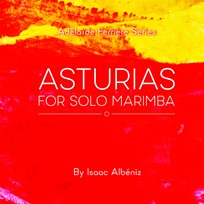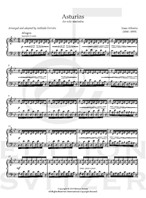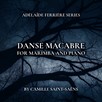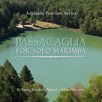Item details
-
Description +
-
Duration. approx. 6 min.
Arranged and adapted by Adélaïde Ferrière
The adaption for guitar of the famous piece 'Asturias' was originally written for solo piano. This transcription of the piece for solo marimba stayed true to the original tonality of g minor. It also keeps the central section of the piece very expressive, between the middle of the two moto perpetuo sections. I utilised sextuplets that isn't shown in the original piano version, however shown on the guitar transcription for the Da Capo. This fits very well on the marimba since marimbists have the system of rotation used with the right hand in this score. The arpeggios on the Da Capo are also inspired by the guitar score to create a strong percussive element.
-
-
Instrumentation +
-
Marimba (5-octave)
-
-
Watch+
-
Performed by Adélaïde Ferrière
-
-
About the composer +
-
Isaac Manuel Francisco Albéniz y Pascual (29 May 1860–18 May 1909) was a Spanish pianist and composer best known for his piano works based on folk music idioms. Transcriptions of many of his pieces, such as Asturias (Leyenda), Granada, Sevilla, Cadiz, Cordoba, Cataluña, and the Tango in D, are important pieces for classical guitar, though he never composed for the guitar. The personal papers of Albéniz are preserved, among other institutions, in the Biblioteca de Catalunya.
-
-
Reviews +
-
Review (Percussive Notes, June 2020)
Named after a northwest region of Spain, “Asturias” is a well-known composition from the late 19th century by Catalan composer Isaac Albéniz. Though written for solo piano, several renditions of the piece have found their way into the marimba repertoire as a concert staple. Adélaïde Ferrière’s new version of “Asturias” for solo marimba is a fresh alternative, combining elements from the original composition and arrangements for guitar. At about six minutes in length, this arrangement is ideal for any advanced marimbist.
While the program notes provided in the score are brief, they detail some of the structural concepts and broader musical decisions made by Ferrière. For example, she has selected to keep the work in the original key of G minor rather than the commonly used key of E minor. Many of the rhythmic figures are inspired by the guitar arrangement, such as the sextuplet partials in the Da Capo sections and rolled chords in the middle section. Not only are these ideas idiomatic for the marimba, they maintain the strong percussive quality of the piece.
From a technical standpoint, the most challenging sections are the opening and recapitulation. The performer must have solid control of octaves and intervallic changes, particularly in the right hand, while maintaining the melodic material in the bottom voice. Additionally, the sextuplet partials are executed by mallets 3 and 4 in the right hand and range from octaves to thirds between the two manuals. In contrast, the middle section gives the player more freedom to explore musicality, tempo fluctuation, and touch. I highly recommend considering Adélaïde Ferrière’s arrangement of “Asturias!”
—Danielle Moreau
-
-
Credits +
-
Front Cover Design: Gaia Gomes
Photo: Adrien Roux
Engraving: Adélaïde Ferrière
Printed in Copenhagen, Denmark
www.editionsvitzer.com
-






